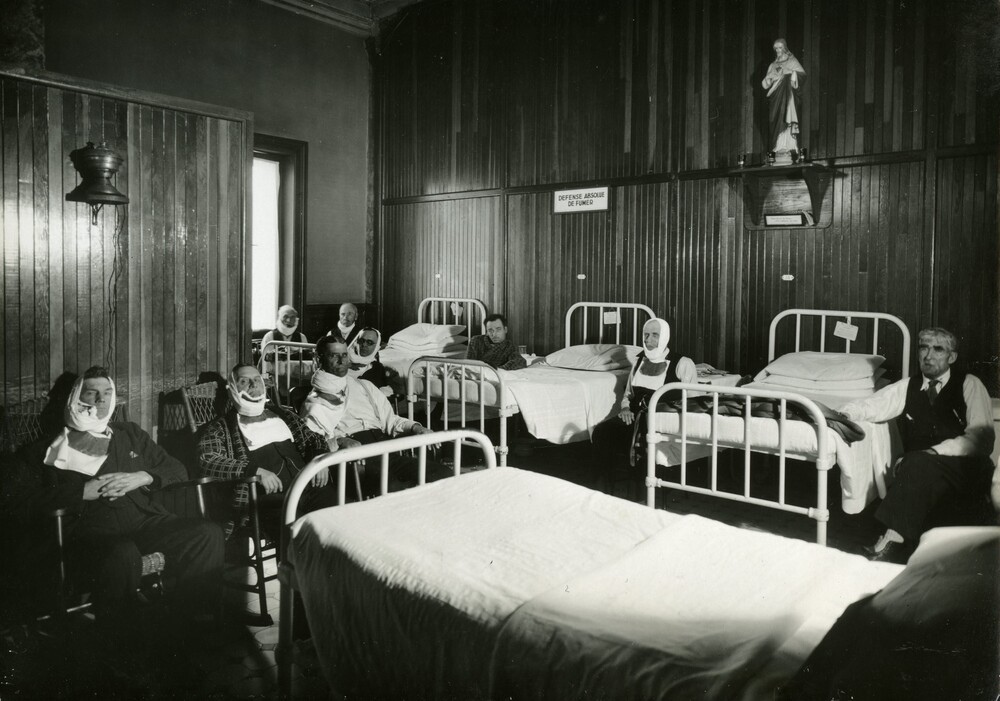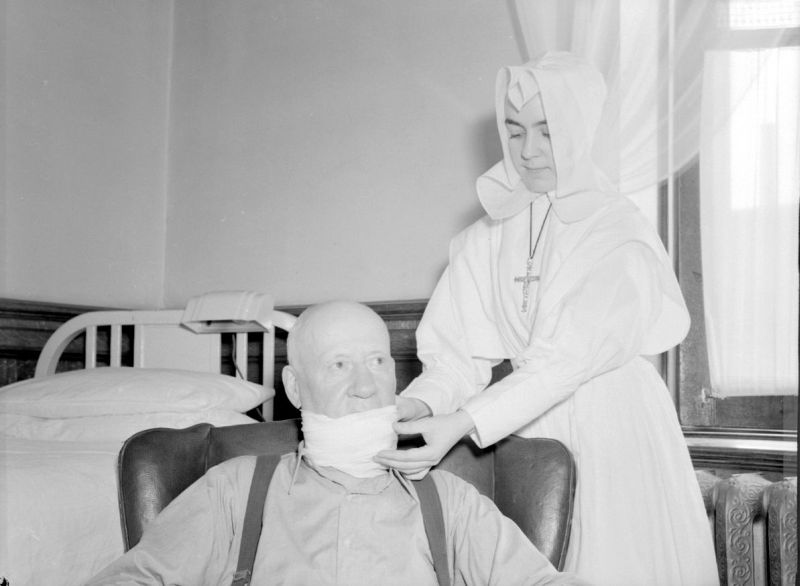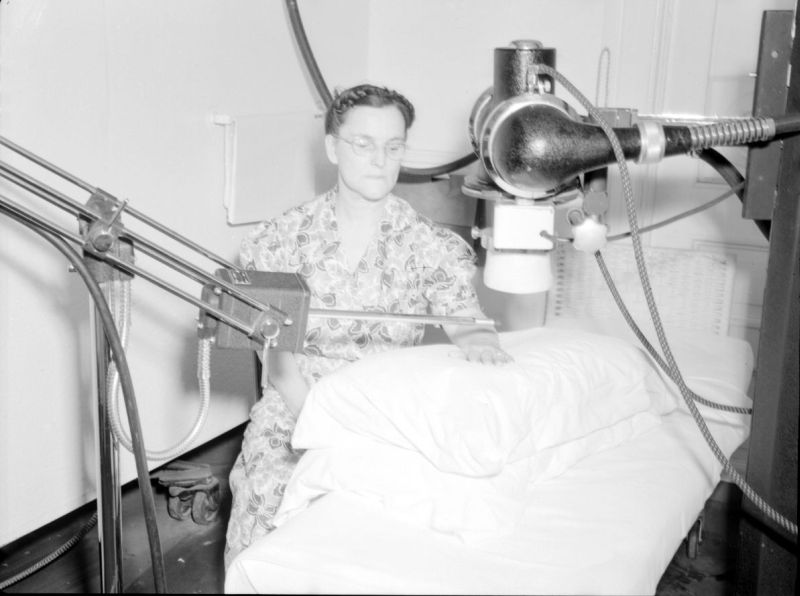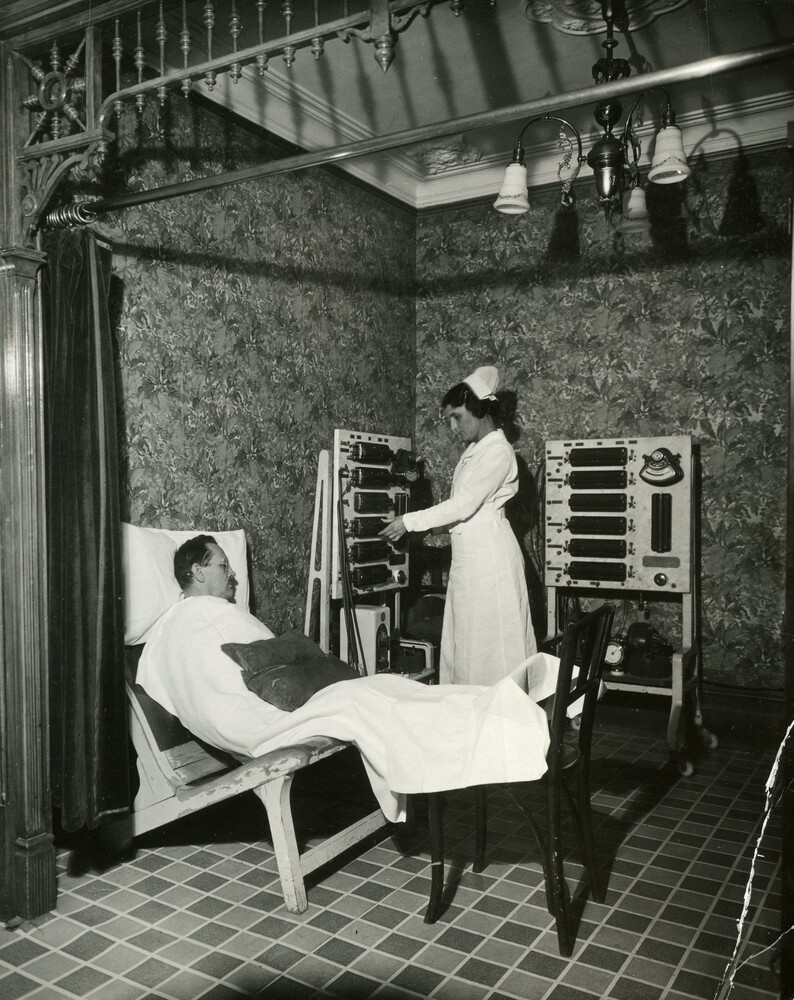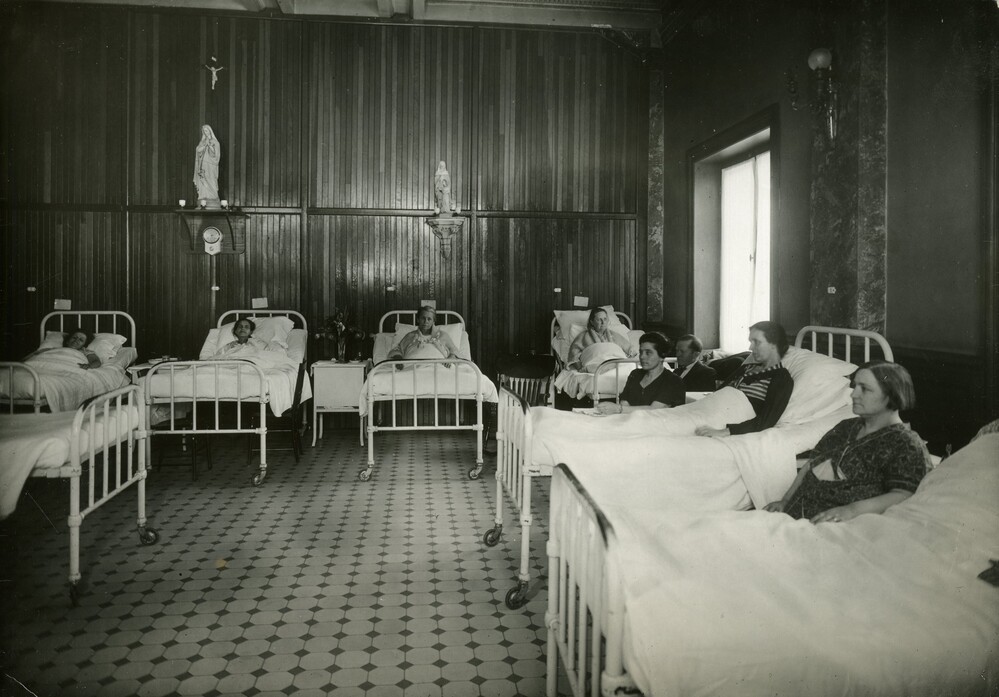Patients at the Institute
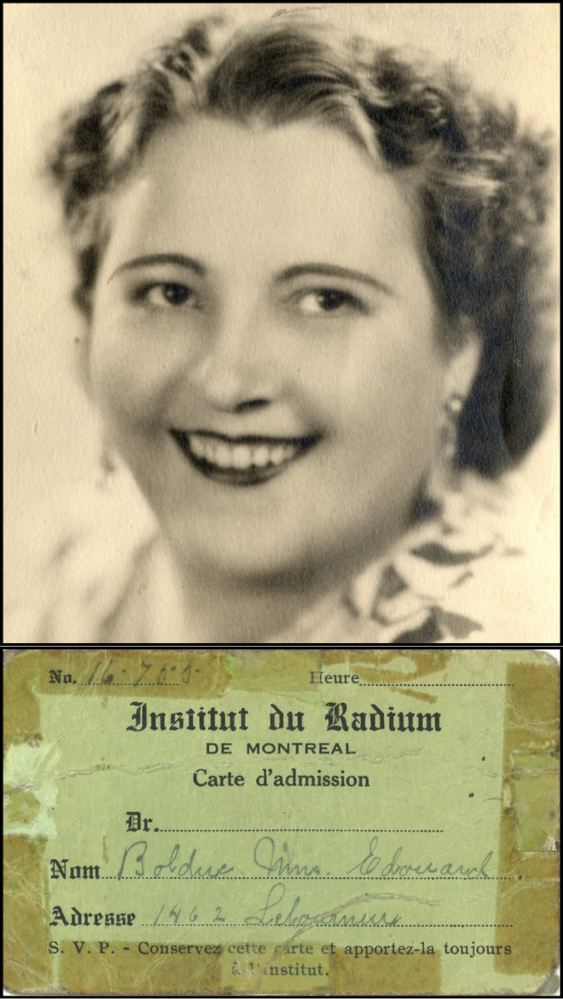
(Top) Photograph of an advertisement for Mary Bolduc, 1932 (Bottom) Hospital admission card for Mrs. Bolduc at the Radium Institute, 1939
Mary Travers, also known as La Bolduc, was probably the most famous of the Institute’s patients. Widely considered to be one of the first singer-songwriters in Québec, she had gained widespread fame during the Great Depression (1929–1939) thanks to her hopeful, humorous songs, catchy melodies and famous mouth reels (turlutage). Diagnosed with cancer following a car crash in 1937, she went through two unsuccessful operations before being transferred to the Radium Institute, where she would eventually pass away on February 20, 1941, at the age of 46.
Besides La Bolduc’s notable visit to the Institute, very few records remain of its other patients. And yet, they are at the heart of its history. We know now that they were numerous, and often very poor. According to statistics gathered by the Institute, the majority of patients did not pay for their care. As an example, between 1929 and 1930, out of 11,424 treatments, 8,908 were provided freely, making up roughly 78%. In 1947, nearly 20 years later, 70% of treatments were still administered free of charge.
Listen to the audio clip (in French) with the translated transcript : Testimony of André Gravel, a Patient at the Radium Institute
Today, one might think it odd that not all medical treatments offered by the Institute were free, but let us remember that before the great social reforms of the 1960s, medical care was privately funded for the large majority of people in Québec. Only the very poor, who used to be called indigents, saw their medical bills paid by the state. In 1934, the City of Montréal and the provincial Government accepted to fund the Institute to the tune of $20,000 and $50,000 a year respectively, on the condition that 40% of its beds were reserved for indigents.
While the majority of the Institute’s patients came from Montréal and, more broadly, Québec, the hospital’s reputation extended well beyond Québec’s borders. For example, in May 1937, the Institute received a letter from someone suffering from breast cancer in Haiti: “This patient is ready to cross great distances and make every sacrifice possible provided they be cured.” After a harrowing five-day voyage by boat, she finally reached Maisonneuve. Sadly, the illness had reached an advanced stage. Treatments ultimately proved unsuccessful, and she succumbed to her disease soon after.
Which is not to say that the Institute’s radium treatments were always ineffective. In a memorandum addressed to Québec’s Health Ministry, Doctor Origène Dufresne explained that roughly 30% of cancer cases were cured by radium treatments. The Doctor maintained that the recovery rate of patients depended mainly on the nature and stage of the illness. Even today, early detection is still the best way to increase the chances of surviving this disease.
In addition to scientific challenges, many other issues are associated with the development of effective cancer treatments. Scientific progress does not solely depend on researchers’ capacity to solve the problems they are studying. In the last section of this exhibition, we will learn how the history of the Radium Institute was plagued with other problems such as issues of funding, lack of space, lapses in safety regulations and several interpersonal conflicts.


